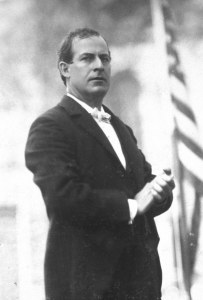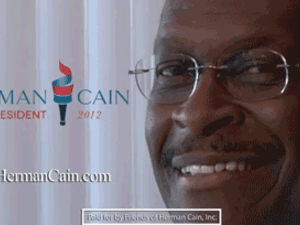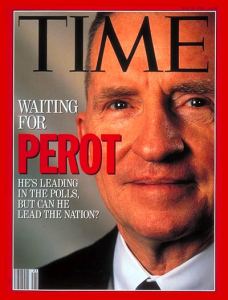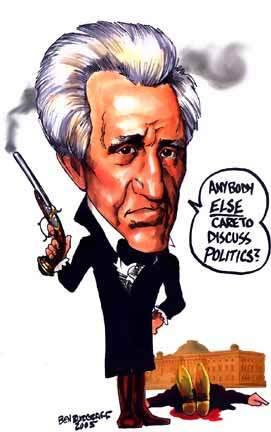The following deals with political science mumbojumbo.
DISCLAIMER: This does NOT serve as a replacement for reading Chapter 9.
PART 1
Once upon a time, it was a big deal if you were a Democrat or Republican. Due to laws and rules the parties have weakened and it’s no longer as big of a commitment to join a party.
Political parties are groups that try to elect people to public office. To make it easier, candidates are placed on ballots with a label of their political party. This doesn’t not occur in Australia and Israel for obvious reasons. A political party exists as a label of identification, an organization that recruits people to campaign and run, and as a set of leaders, who control the legislative and executive branches of government. But the parties have become increasingly weaker and no one really identifies with them anymore. Also, as an organization, they can’t even decide who is nominated.
In Europe, political parties are very different. They nominate the candidate without holding any primaries and once elected, the official always does what the party wants. Political parties are extremely active in the lives of European citizens, who pay dues and regularly attend meetings. They also sponsor youth groups and the like. In the US, political parties have had to focus on both the local and national levels, as both groups make important decisions. Also, US law heavily regulated the activity of political parties, which has made them weaker. We tend to keep politics separate from our social lives as well; talking about politics with friends is often considered taboo.
Political parties started in the 1790s with Thomas Jefferson, who opposed Treasury Secretary Hamilton’s policies. Jefferson and ally James Madison called themselves the Democrat-Republicans, while Hamilton and Adams stuck with the name Federalists. The Republicans were at-first thought to be temporary, but after huge gains in the 1804 election, the Federalists were completely wiped out. The D-Rs became the only political party, all to Jefferson’s liking. Everything would change with Andrew Jackson and the election of 1824.
The D-Rs had been in power for a while. People were growing tired of the same old thing, and many other political parties began to emerge. Conventions to nominate a party’s candidate first became popular in the 1830s. Following Jackson’s time in office, the D-Rs and the Whigs, in opposition to Jackson, became the main two parties, with the modern-day Republicans as a third party. The issue of slavery and the imminent Civil War made the Republicans extremely popular.
The GOP would remain in power for 75 years. The nomination of Democrat William Jennings Bryan split voters in the south and midwest, who supported Bryan, while voters in the northeast supported McKinley. The regions would remain this way until the 1930s. With the increased loyalty of certain regions, it became apparent that a political party would have to run on both a national and state level.
Within the Republican party in the 1890s, a faction of progressives came into the fray and opposed the stalwart Republican tradition of giving political jobs to loyal supporters. The progressives demanded that there be primary elections held to stop the stream of bland candidates and that voter-fraud laws become a reality. Governors Hiram Johnson and Robert J. La Folette, later a Progressive Presidential candidate, instated the initiative and referendum in their states of California and Wisconsin.
There have been many time when the entire political scene has been changed so much that down is up and Megan Fox is Betty White. Five main periods have seen realigning periods, in which an issue, like slavery or the economy, splits a political party and the voters. The five periods are 1800 (Jefferson defeated Adams), 1828 (Jackson came to power), 1860 (Whigs disappears and Lincoln reins), 1896 (when the country split into loyal regions), and 1932 (when FDR and the Democrats came to power. In realignment, either the losing party disappears all together, such as with the Federalists or the Whigs, or remains dormant, with some of its supporters going to the opposing party.
Slavery had realigned the parties in the 1860s. The economy realigned the parties in the 1890s. Farmers had large amounts of surpluses and weren’t selling much of anything. They were against the two-party system and formed the Populists. William Jennings Bryan later endorsed a Populist platform and earned their support. From this, the South, the location of many of the farmers, would remain ardently Democrat.

Bryan, a brilliant orator, was famed for his 'Cross of Gold' speech, in which he advocated the silver standard at the 1896 Dem Convention in Denver.
One final realignment has occurred in the South. If you haven’t been living under a rock, you’d know that the South is now as red as can be. The switched from the Democrats after Texan LBJ’s ultra-liberal policies went sour and the Convention in Chicago went disastrously.
Since the 1960s, many people have strayed from voting for a straight ticket and voting for all the candidates from one party and instead opted to vote for a split ticket and vote for candidates from multiple parties. Around the 1900s, the Progressives also invented the office-bloc ballot, which showed all the candidates for a position of public office. Before that, the party-column ballot was the norm with all the candidates for one party in one single bloc, regardless of what position they were running for.
PART 2
Though each major party has a bureaucratic structure, at the local, state, and national levels, the party acts independently. A national convention is held once every four years in order for delegates to nominate the Presidential nominee and unify the party. Typically, the Democratic delegates are as diverse as can be (which has led to it being factional), while the Republican delegates are smelly old, white guys that usually all agree. A national committee runs all the party affairs in-between conventions and elects the national chairman, who runs and is the face of the party. Congressional campaign committees help candidates run for Congress
Before the 1960s, both major parties didn’t have bureaucratic structures. The Republicans’ idea of turned their party into an organization, financed machine focused on getting people elected worked beautifully. The biggest change came with computers– Republicans could get a hold of a mailing list of past or possible donors, and from that, recruit candidates. The Democrats were able to play catch-up and benefited big time in the 1992 election. Most of the donations for both parties go towards soft money, which are funds that run TV ads and polls in state and local elections.

For aspiring campaign-ad producers, Cain's ad provides them with the perfect example of what not to do.
In the 1970s, the Democrats started to weaken the role of party leaders in the election process and give more power to the people of the party. Among other rules, they placed a limit on the amount of elected officials who could vote at the conventions. The rule went out the door in 1981 and led to the creation of superdelegates, which are present or past elected officials who are more likely to do the party leaders’ bidding than the other delegates. They account for 1/5 of the Democratic delegates.
Because the national party organization doesn’t run the state and local parties, political machines, in which candidates are recruited with money, political incentives, and a guarantee of power, have become more prevalent. The most famed machine was Tammany Hall in New York, first used by Aaron Burr in the 1800 election. Machines would be the source of jobs, welfare, and would regularly hold picnics and orgies. Okay, so maybe not orgies, but you catch my drift. Once the immigrants arrived in the early 20th century, the machine had been perfected to win election after election.
The machines began to lose their power as voter fraud laws became an actuality. The Hatch Act made it impossible for civil service employees to engage in a campaign. As people became more educated and government provided welfare, the machine lost all of their power and few large organizations still exist today. They also contributed to their own downfall– they were so concerned with winning that they would support whatever candidate held the best chance of doing so.
The direct opposite of the political machine is the ideological party, which holds strict stances on the issues and heavily values them. They developed into the major parties as reform groups in the 50s. Then in the 1960s and 70s, social issues like civil rights and peace came front and center, and the ideological groups held more water because they were consistent in their beliefs. The parties are still very factional– a Presidential candidate could never obtain the complete support of his party.
Joining a political organization is serious business. But for some, it’s like heading down to the local TCBY and getting some rockin’ yogurt. Product placement complete. Anywho, we call the social rewards of joining political organizations solidary incentives. The groups they form, solidary organization, aren’t corrupt and usually move around on the issues. Many people find politics more fun if their friends are involved.
In Detroit, as most of us know, the UAW sponsored the Democratic party. Hence, the Democrats have become a sponsored party because they’ve come to be supported by an organization in the community. The union always tells its workers to vote for Democrats. But for those beyond the influence of organization, it’s not always that hard to pick a President. A candidate might garner a personal following from people because s/he is has popularity and knows the right people. If one doesn’t post offensive things on Facebook and Twitter, they too can receive a personal following.
PART 3
Basically, no other country in the world has a two-party system. Most countries either have dozens of parties or just one state-run party. Both sides have been pronounced, but within a few years, have the majority in Congress. All of our elections are based on the plurality system, which holds that the candidate with the most votes wins the election, even if s/he hasn’t received the majority. In France and other multiparty countries, run-off elections are extremely prevalent. The plurality system can be seen in the electoral system- if a candidate gets most of the votes in a state, s/he wins all the state’s electoral votes.
The two-party system persists because, though we may differ on wedge issues, we can all agree that capitalism will do for now and that democracy is fucking awesome. You never hear about any third party Presidential candidates because most of the donations they receive goes to simply getting their name on the ballot in each state. Beyond that, there isn’t much money left. The smaller, third parties are extremely ideological, which has led moderates not to join them, so they have remained teeny tiny.

Ross Perot has garnered the most votes for a third party candidate in a Presidential election, save for TR in 1912.
The textbook author tries to argue that third parties are ahead of the zeitgeist. Their ideas are the ones that will become mainstream in the major parties one day. Will gay marriage one day be legal? Yes– there’s a party for that. Will marijuana one day be legal? Yes– there’s another party for that. But alas, the third parties will never, ever get a President elected and hence, will never hold much control.
Nominating a President has become harder and harder for the parties. Because a candidate must get the support of the majority of his/her party’s delegates, s/he might take mostly ideological views that leave no one happy. The delegates, though picked to represent voter opinion, usually don’t. Thus, primaries have become the main source of nominating a candidate. Party delegates are picked through caucuses, in which party members meet to pick delegates that already back a primary candidate.
The method for winning a Presidential election is simple: appeal to the average. This has been hard for both the Republicans and the Democrats, though. The aforementioned delegates are very ideological and often lead the candidate to move to one end of the political spectrum and not be able to appeal to the average American, who is moderate.
Political parties represent an important ideal in our democracy: the peaceful transfer from one group to another group, though they have drastically different views. They’ve struggled and changed over time, and yeah, we hate them at times, but sometimes, they get shit done.



Discussion
No comments yet.